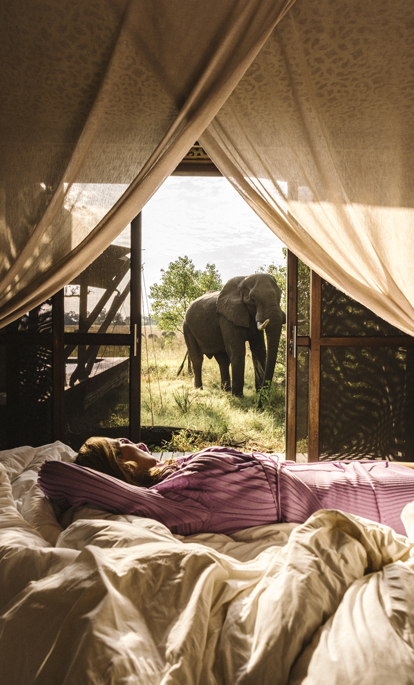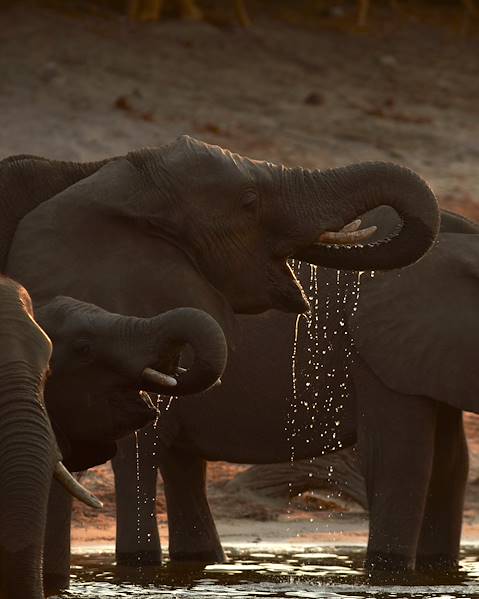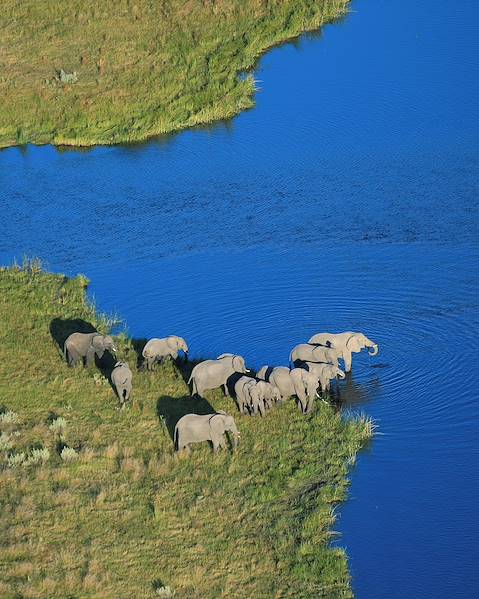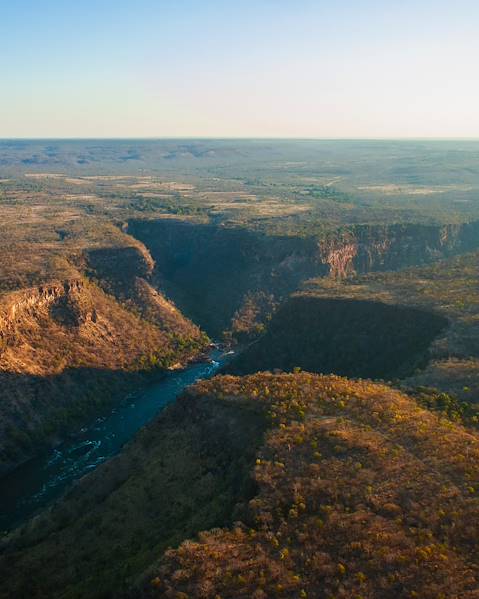Botswana – land of desert, delta and diamonds – can be challenging to navigate, and public transport will only get you so far. Reaching accommodation, national parks, reserves and private concessions often relies on private car hire or hopping on light aircraft. On the positive side, you can experience pristine wilderness, ancient rock art, captivating boat trips and prime game viewing minus the traffic. Whichever mode of travel you choose, plan your best route with our guide to transport in Botswana.
By Plane
The already huge distances involved in travelling across Botswana seem further stretched by its varied terrain and vast expanses of wilderness. This makes travelling by plane by far the easiest and most convenient way to cover long distances. Many far-flung destinations are only accessible by air, often involving a ride on the nine- and 12-seater light aircraft that ferry passengers around like bush taxis. Expect to drop down in the middle of nowhere, possibly with wildlife roaming the runway.
- Gaborone Airport: Botswana’s international air arrivals hub is Sir Seretse Khama International Airport, nine miles north of the capital. International flights are limited to South Africa, Kenya and Zambia, with the airport being a hub for Air Botswana, South African Airways, and its subsidiaries SA Express and Kenya Airways. Regular domestic flights serve Maun, Kasane and Francistown.
- Maun International Airport: Maun in northern Botswana provides access to the Okavango Delta, Chobe National Park, several important game reserves and the Makgadikgadi Pans. Maun Airport, just three miles from the centre of town, offers scheduled flights via Air Botswana and SA Express to Gaborone and other domestic destinations, as well as to Johannesburg and Cape Town. There are frequent short-hop charter flights to the delta and its small airports, as well as to the incredible Zimbabwean Victoria Falls.
- Kasane Airport: Kasane is a base for Chobe National Park and Victoria Falls, just across the border. This small airport offers flights to Gaborone via Air Botswana and air charters around the region. Located over 600 miles from the capital, it’s useful for those short of time who want to explore the region and visit the falls.
- Francistown Airport: This is a quiet airport with one paved runway and a modern terminal building. Adjacent to the town, the airport is served by Air Botswana with several weekly flights to Johannesburg and Gaborone.
By Car
Although not a typical way to travel around Botswana, hiring your own vehicle for a self-drive tour is undeniably exhilarating, giving you the freedom to roam at will. It’s the ultimate wilderness adventure and not for the fainthearted, nor the unprepared. You’ll need to be confident behind the wheel of a 4x4, up for getting off the grid and ready for close encounters with wildlife. Highways connect Botswana’s major towns and although most are in good condition, some sections are badly potholed. Away from the highways, the road conditions dramatically deteriorate; there’s not much in the way of secondary roads, and you can quickly go from tarmac to thick sand.
By Bus
While tourists tend not to use them, buses are commonly used by locals as a very cheap way to travel between Botswana’s major towns. They’re frequent and a good way to meet the locals, although they can also be crowded, uncomfortable and noisy. There are two different kinds: bigger coaches and smaller minibuses called ‘kombis’. Both serve the same destinations, but the smaller ones are faster with fewer stops, and the big ones take longer to fill up and set off. Seabelo is the main long-distance operator with regular services from Kasane, Maun and Gaborone.
By Taxi
Taxis are a popular way of getting around cities and towns amongst locals in Botswana. There are several different taxi companies as well as some ride-hailing apps are available in Gaborone. It’s best to agree on a price before departing as some drivers will bump it up if not agreed prior, and tipping is not usually expected but rounding up the fare after a journey is common practice for travellers.
By Train
Trains aren't often used by tourists, but locals commonly use the railway that runs from the South African border at Lobatse through Gaborone to Francistown and across the border to Bulawayo in Zimbabwe, with onward connections to Victoria Falls or Harare. Unfortunately, there are currently no cross-border trains to or from South Africa.
By Boat
Taking to the water on a traditional mokoro (dugout canoe) is a must when in Botswana. Boat safaris are possible in the Chobe River, Okavango Delta, Pan Handle and other waterways, combining the river, the sunset and wildlife in an incredible nature experience. Motorboats are easier to enjoy for longer as you’re not restricted to sitting in one position, and the seats are more comfortable. It’s more like being on a game drive, just on the water; some places offer boat safaris all year, but many are confined to operating in the dry season when the floodwater is high (May to October).
Alternative Modes of Transport in Botswana
Experienced riders can enjoy a different type of horsepower during their trip. Riding safaris take you from harsh dry desert to delta wetlands. The safaris are fast-paced and exciting, and Botswana has earned its place at the top of many riders’ bucket lists. Thrill-seekers can also get their kicks on quad bikes and mountain bikes.
















